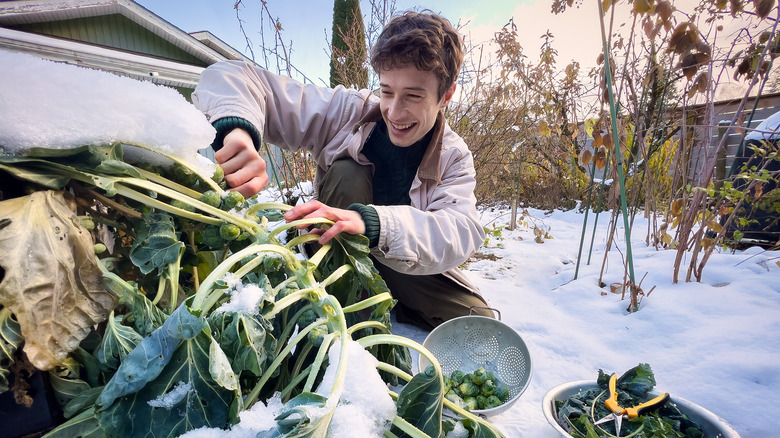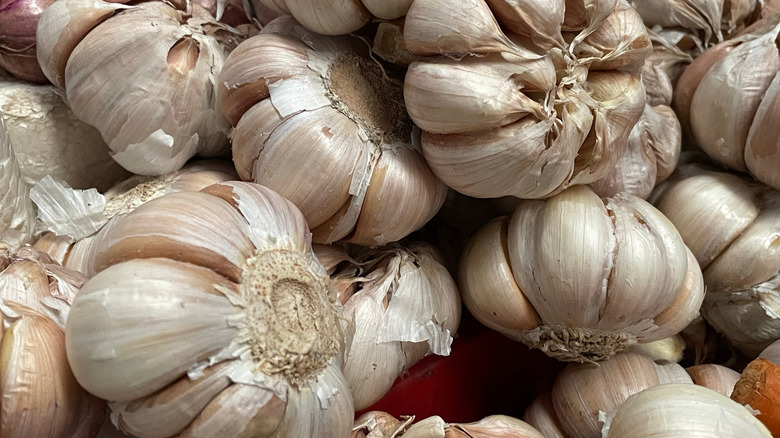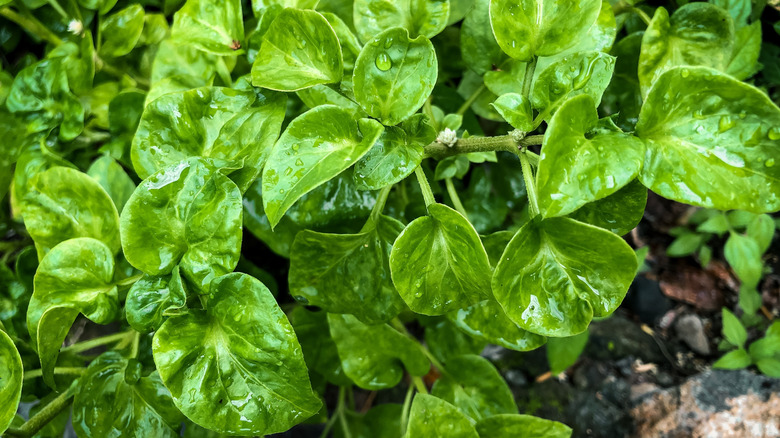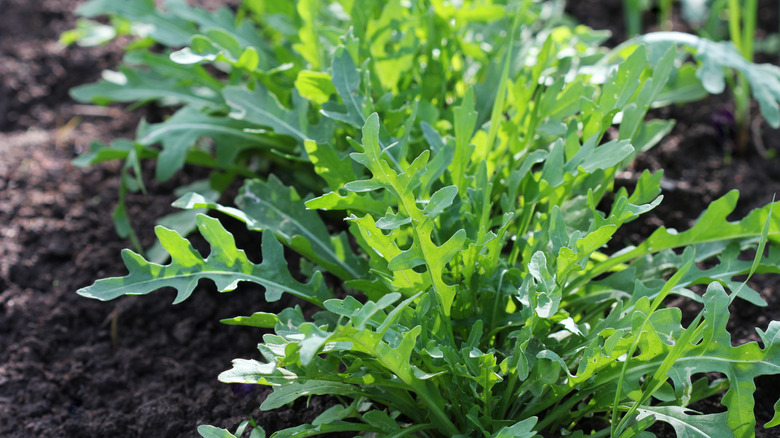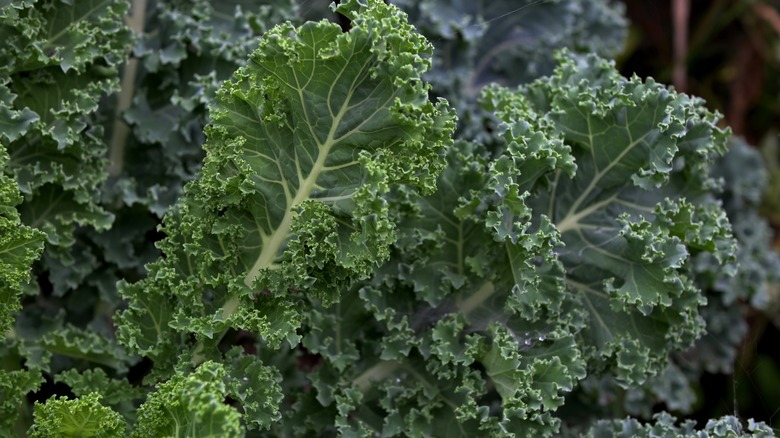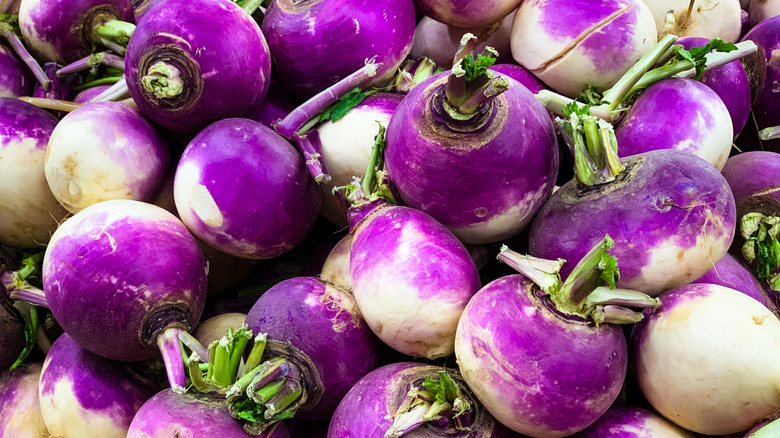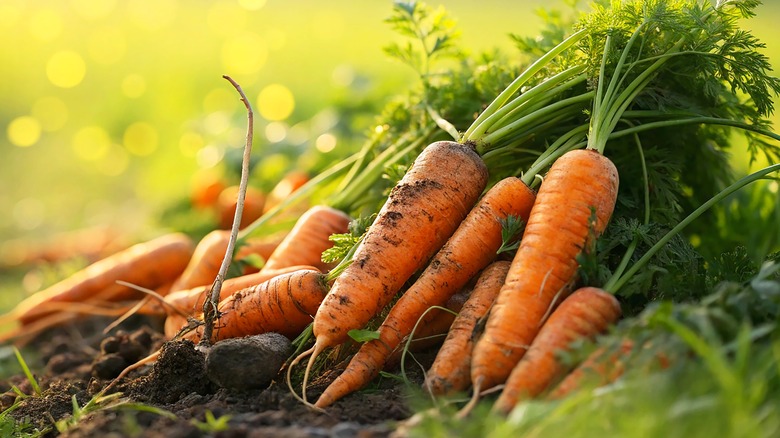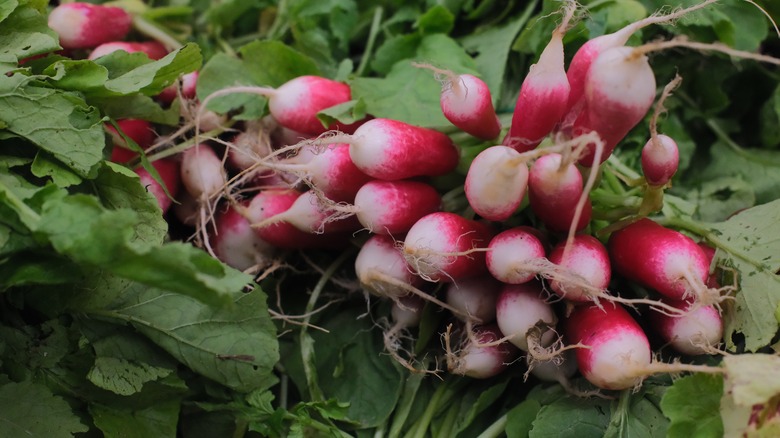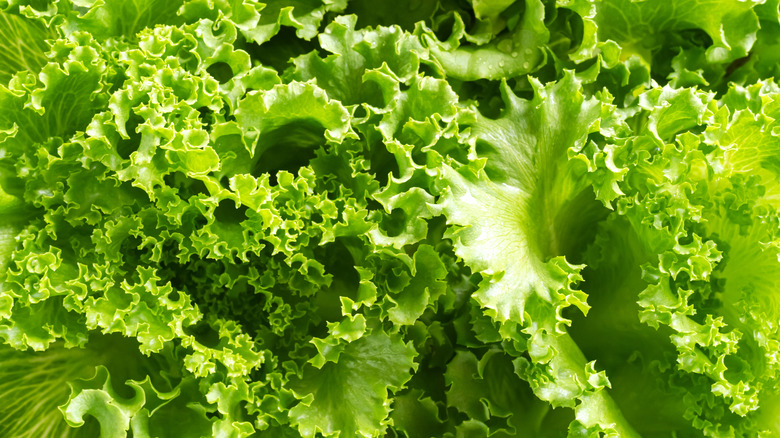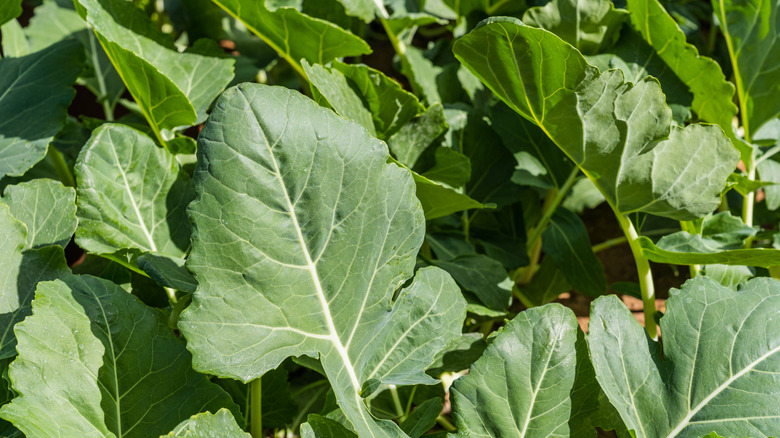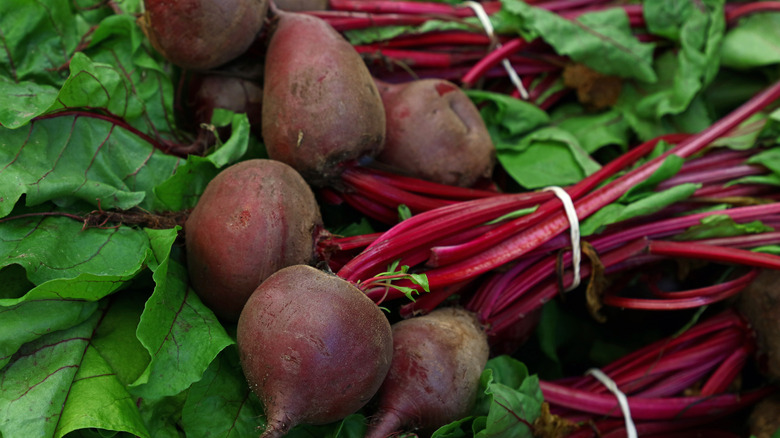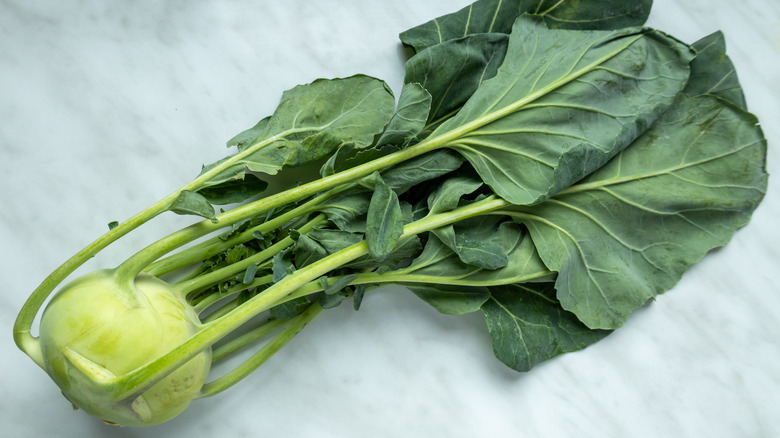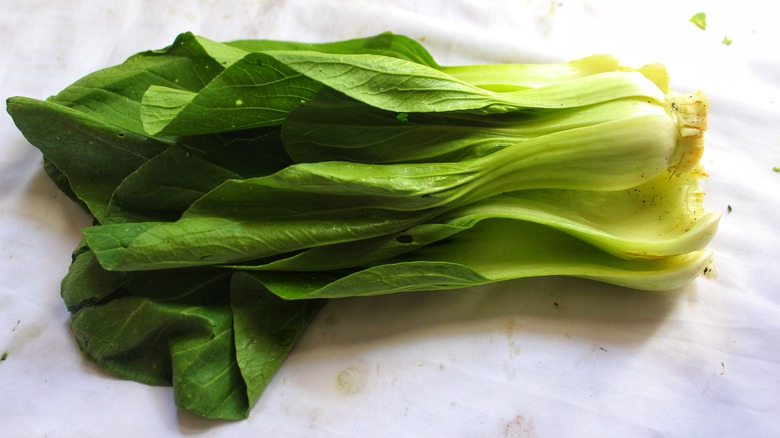12 Of The Best Vegetables To Grow In October For A Winter Harvest
Planting vegetables in October may seem a bit unorthodox, but the practice offers two big benefits for gardeners. It provides them with fresh, delicious, nourishing veggies in the winter months and enables them to keep growing when they might not ordinarily be able to garden. Some vegetables will likely taste even better than normal, as several on this list develop better flavor after they've endured one or more frosts. This phenomenon occurs when low temperatures trigger plants to produce enzymes that break down starches in the plants into sugars. You'll also encounter here a few cool-season vegetables that play nicely with others and serve as beneficial companions.
Obviously, cold hardiness varies by locale, so not all veggies on the list are cold-hardy in all USDA hardiness zones, but you should be able to find at least a few on the list in your zone. A significant key to gardening at this time is pinpointing the time when the ground freezes in your area, since planting won't be possible after that. So, buckle up and let's plunge into this list and plan which yummy vegetables you'll grow in October.
Garlic
Garlic (Allium sativum) stands out as a vegetable that can be widely grown in October; it is hardy in USDA zones 4 to 9. Thus, now is the time to learn everything you need to know to grow your own garlic. To allow time for garlic to establish roots, plant about three weeks before the ground freezes in your locale in well-drained, mulched soil in full sun. Plant about 4 to 8 inches apart. When half its leaves have turned brown, your garlic is ready to harvest.
Spinach
Spinach (Spinacia oleracea) is one of the fastest-growing vegetables, popping up within seven to ten days from planting. The seeds of this nutrient-packed leafy veggie prefer soil temperatures between 45 and 68 degrees Fahrenheit for germination; transplanted seedlings can tolerate temperatures as low as 20 degrees Fahrenheit. Plant in well-drained, rich soil in full sun to partial shade. Keep spinach consistently moist by mulching it. You can harvest even the smallest leaves, and new leaves will keep growing even as you're harvesting.
Arugula
If you're focusing on leafy greens in your fall-winter garden, you may want to know the benefits of planting spinach and arugula side by side. They're both cool-season crops, for example. Arugula (Eruca sativa), like spinach, grows quickly; seeds germinate within a few days of planting. This peppery green likes well-drained, rich soil and full sun. The longer leaves stay on the plant, the more bitter they may taste, so harvest accordingly. Though arugula is hardy in USDA zones 2 to 11, arugula leaves surprisingly don't keep well in the fridge, so pick only what you'll use right away.
Kale
Kale (Brassica oleracea var. acephala) not only withstands frosts and light freezes, but also offers its best flavor after fall frosts. Like other cool-season leafy vegetables, kale should be grown in full sun in soil amended with abundant organic material, such as compost. Be aware of common mistakes to avoid when growing kale in your edible garden, such as insufficient soil preparation; kale likes a slightly acidic soil pH, for example. Kale also needs sufficient nitrogen, but get your soil tested before fertilizing to see if it is nitrogen-deficient.
Turnips
Easy-to-grow turnips (Brassica rapa ssp. rapa) are a favorite crop among gardeners, especially because they're also cold-hardy. Frost improves their flavor. They can be harvested when they are 2 to 3 inches wide; allowing them to get too large will result in a bitter and fibrous vegetable. Turnip greens can be eaten raw or cooked. Check out tips to keep turnips plentiful in your garden through winter, such as amending the soil with organic materials. Soil should also be well-drained and moist.
Carrots
Carrots (Daucus carota), a garden staple, germinate from seed about three weeks after planting in soil that is at least 45 degrees Fahrenheit. They are well-suited to raised beds. Mulch them with shredded leaves or compost before the ground freezes, and you'll be able to harvest them throughout the winter. Follow easy tips to make growing carrots a breeze, such as sowing them directly from seed in your garden rather than transplanting indoor-grown seedlings.
Radishes
Radishes (Raphanus sativus) are popular in the garden because they grow quickly and they can be good friends to other cool-season veggies. In fact, the benefits of planting radishes next to your carrots in the garden are probably greater for the carrots than the radishes, but radishes benefit, too. The carrot's taproot, for example, breaks up compacted soil. Plant radishes in full sun to partial shade in loamy or sandy, well-drained soil. Radishes are ready to harvest just three to six weeks from planting.
Lettuce
Cold-tolerant — hardy in USDA zones 2 to 11 — lettuce (Lactuca sativa) grows in full to partial sun in soil that is moist to wet. It seems that carrots need multiple friends, and lettuce is the crunchy companion plant that grows perfectly alongside carrots in the garden. In this pairing, it is all about the roots. Lettuce has tiny roots, while carrot, of course, has a large root; planting them together saves space and enables both plants to use water efficiently.
Collard greens
Ready to plant collard greens (Brassica oleracea var. viridis) as a crop for winter? You can expect to grow them through the winter, harvest their green leaves well beyond the first frosts, and even harvest and consume frozen leaves. Like several other vegetables on this list, collards taste better after the first frost. They tolerate various soils. Test the soil for sufficient nitrogen, and amend if needed. With collard roots reaching as deep as 2 feet, be sure the soil is deep enough.
Beets
Known as the best vegetable to grow if you're a lazy gardener, beets, also called beetroot (Beta vulgaris), are super-easy to grow and cold-hardy in USDA zones 2 to 11. Boost germination by soaking beet seeds in warm water for 24 hours, then sow them directly in the garden in rich, well-drained, moist soil. Your beets will thrive in full sun to partial shade and need consistent watering. Harvest when the root is ½ to 3 inches in diameter.
Kohlrabi
Kohlrabi (Brassica oleracea var. gongylodes) is known as a vegetable you can plant in October for a delicious winter harvest. This veggie, which looks a little like a satellite sprouting leaves, shows its best growth at temperatures between 60 and 70 degrees Fahrenheit, but it can tolerate mild frosts. Directly sow seeds into fertile, well-drained, and moist soil, and ideally provide at least six hours of sun daily. Harvest when the head is 2 to 3 inches across for the best flavor and texture.
Bok choy
Known for its ability to withstand late fall plantings, bok choy (Brassica rapa ssp. chinensis) is a fast-growing fall vegetable that's not too late to plant. Bok choy is an Asian green said to be more cold-tolerant than other leafy greens on this list. Transplant seedlings or directly sow seeds in moist, fertile soil in full sun to partial shade. You can harvest the entire head or by single leaves. If not harvested when ready, bok choy will bolt rapidly.
